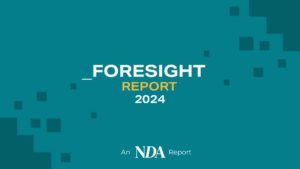By Sean Hargrave
Publishers and brands must invest in first-party data and evaluate ID technologies to flourish in the post third-party cookie world
The death scene of the third-party cookie has been long drawn out. After previous deadlines have been extended, Google has now said tracking cookies will be phased out before the end of next year.
Google first suggested they would be replaced by a system called Federated Learning of Cohorts (FLoC). This would have placed users into groups, or cohorts, depending on the interests their browsing data revealed. However, the move has proven controversial, and the tech giant has scaled back. It is now favouring a slightly more limited option, called Topics, which will store one subject the user has shown an interest in during each of the past three weeks, meaning each person will be limited to three Topics at any one time.
Beyond Google, the race is on for publishers and brands to deepen their reserves of first-party data and become more self-reliant in knowing their customers. At the same time, they are evaluating a raft of alternative audience targeting solutions.
The claims vary from one vendor to another but the tools on offer are designed to recognise someone, from elements such as email or device. This means they can be targeted for advertising and then tracked so any impact of an advert can be attributed back to the relevant campaign. There are assurances this will only happen with transparent user permission or through encryption techniques. This means a brand could target a user they are keen to win over on a publisher’s site without any personal information swapping hands.
In other words, a brand might be assured that their ad is being served to an appropriate recipient, but the recipient’s actual identity is never revealed to them. All they would know is that an ad was served and whether it led to a positive reaction, such as a site visit or a purchase.
This ability to track, with permission and privacy protection in place, is vital because if campaigns cannot be targeted on the open web, it would be far too tempting for brands to rely on advertising solely through Google and the tech giants, argues Joanna Burton, Chief Strategy Officer at ID5. The company assigns random numbers to tag and then anonymise users so a brand can see when someone that has shown an interest in its products or services is visiting a third-party site. They can then both target that user and rely on their numeric code for frequency capping and measurement.
“It would be very easy for brands to just stick to walled gardens with massive first-party data sets but what about the independent publishers who keep us entertained and informed? We’ve got to help them monetise their content,” Burton says.
“By allowing brands to know when a previous visitor is on a publisher’s site we help with targeting and we also help with frequency capping, which is going to be a huge potential issue if cookies are dropped. Advertisers want to know they are not bombarding the same person with the same message.”
Walled gardens, but with gates
While some advertisers may fear the loss of cookies will impact their ability to target, they may be surprised to hear that around 40% of advertising is currently bought without a third-party cookie playing a role. That is because people have either blocked them or are using a browser that has stopped using tracking cookies.
Additionally, for Pierre Diennet, Global Partnerships Lead at data business, Lotame, another point concerned advertisers need to bear in mind, is there is no way the ad industry will drop its ability to track users who have given permission to be targeted. He also believes that in a world without third-party cookies, publishers need not worry that spend will be overly focussed on the tech giants’ walled gardens. These will still be powerful, but they will evolve to enable support tracking across different sites on the open web.
Diennet says: “Google will still allow cross-site tracking, and some folks will kick and scream, but advertisers need a way to personalise adverts and users would rather see relevant adverts. Instead of using privacy to put everything behind the tech giants’ walled gardens, I think we’ll see those walled gardens develop transparent gates. This transparency is key to everything, advertising will need to be more accountable and less opaque.”
First-party data imperative
For brands, the demise of the third-party cookie is a reminder of the need to reduce their dependence on outdated technology and instead double down on discovering more about their customers through first-party data. According to Boots CMO, Peter Markey, the beauty and healthcare retailer has more than 15m members of its Advantage card loyalty scheme. By combining this data asset with permission-based audience tracking, he believes targeting can be improved significantly.
He says: “Third-party cookies have helped brands target in the past but now the conversation around its demise is forcing advertisers to raise the bar on how and what they communicate. Brands are going to need to really deepen their relationships with their customers. We use our own data sets to buy around 40% of our media. Like most, there are still elements of cookie tracking that we’re using but we’re pushing more and more to focus on ID to personalise messaging. With the new ID platforms, we can be far more laser sharp in who we want to talk to and when, through what program what activity than we’ve ever been able to do before.”
The recent Nielsen Advertiser Playbook: Strategies and Tactics for 2022 Planning supports Markey’s insistence on the need to get better first party data and emphasises the best advice is to ensure databases are interoperable with the audience targeting technology used by publishers. This will allow advertisers to be as self-reliant as possible but also tap into other databases that offer permission-based, cross-site tracking.
Evan Jackson, Senior Director of Digital, Data and Technology at Starcom, agrees the demise of tracking cookies will favour publishers and brands who own first party data, typically in a Customer Data Platform. He further foresees the success of brands and publishers with good first-party databases being bolstered by ID and audience-targeting technology, particularly for publishers who cooperate with one another to offer enhanced contextual targeting across a range of domains.
“You’re already seeing publishers creating data co-operatives, where they offer advertisers scale by accessing a number of publishers’ data,” says Jackson. “You can almost use it as an ad network or a private marketplace.
“Third-party cookies were the accepted currency of digital media but they were never truly fit for purpose; they’re static and they expire after thirty days,” he says. “If you have a solution that can look further back, say someone bought a car from you three years ago, you can look at what are the next steps to bring them back into the purchase funnel.
So, we need to test these cookieless solutions to prove effectiveness and scalability before we’re forced to. I think ultimately, whoever figures out cookieless attribution will win a lot of favour with marketers.”
More direct buying, and ‘cleaner’ tech
As tests of privacy-compliant targeting solutions get underway, brands are being warned to be on their guard against intellectual property infringements by Danny Spears, Chief Operating Office at The Ozone Project.
He claims some adtech companies are providing contextual services, on top of third-party cookies or ID tracking, by ‘scraping’ metadata from web sites. This gives an understanding of the page a user has visited, so the context of their browsing behaviour is known. The problem is that this technique is against publisher terms and conditions because it involves “borrowing” a publisher’s intellectual property.
He also warns that brands are going to have to be wary of working with adtech providers that sit in between advertisers and publishers, using new technologies that, in some cases, are little more than “cookies by proxy”. It is for this reason he sees the end of the cookie as ushering in an era of digital advertising that is more direct, and uses “cleaner” tech which is transparent in permissioning.
“The pendulum is swinging back in favour of publishers after programmatic, the problem is always going to be the intermediary layer between brands and publishers,” says Spears. “There’s a lot of nonsense talked about adtech for the open web. The open web’s not going to be here if we can continue this cyclical behaviour of exploitation. That’s why being more direct and using cleaner tech are the future.”
Isabella Jenkins, Agency Partner at Permutive, agrees there is a risk that some solutions will simply swap out cookies for another piece of identification technology that could still be viewed as infringing privacy. Permutive’s solution is an Audience Platform that enables advertisers and publishers to plan, build and activate cohorts – all while keeping everyone’s data safe. For her, it underlines the argument that the future of advertising involves brands and publishers working far more closely together, relying on a privacy-first approach that is fuelled by first-party data.
Jenkins says: “Identity-based tracking across different sites needs to end. I think there are clear indications that the data used to plan and buy media will shift primarily to ‘Publisher Cohorts’ – audiences built directly at source, not third parties, using the publisher’s first-party data.
“Any solution that tries to replicate key cookie functionality will not stand up to regulation now and in the future. Preparation is key. Publishers need to recognise the value of their consented first-party data, while advertisers must work to build strong, direct relationships with publishers. A shift to privacy-first will take time; brands and agencies need to ensure they are building a first-party data strategy that aligns with their values.”
For now, it is not clear what will replace the tracking cookie at the end of next year. It is clear, though, that both brands and publishers with a growth mindset will need to redouble their efforts to build fully-permissioned, first-party databases so they know their customers better. These can be used to improve both targeting and safeguard privacy and are likely to be the starting point for brands to identify audiences of interest on the open web.
First-party data is set to be a foundation stone of the new-look advertising industry. Without it, brands and publishers may find the cookieless era very challenging.









